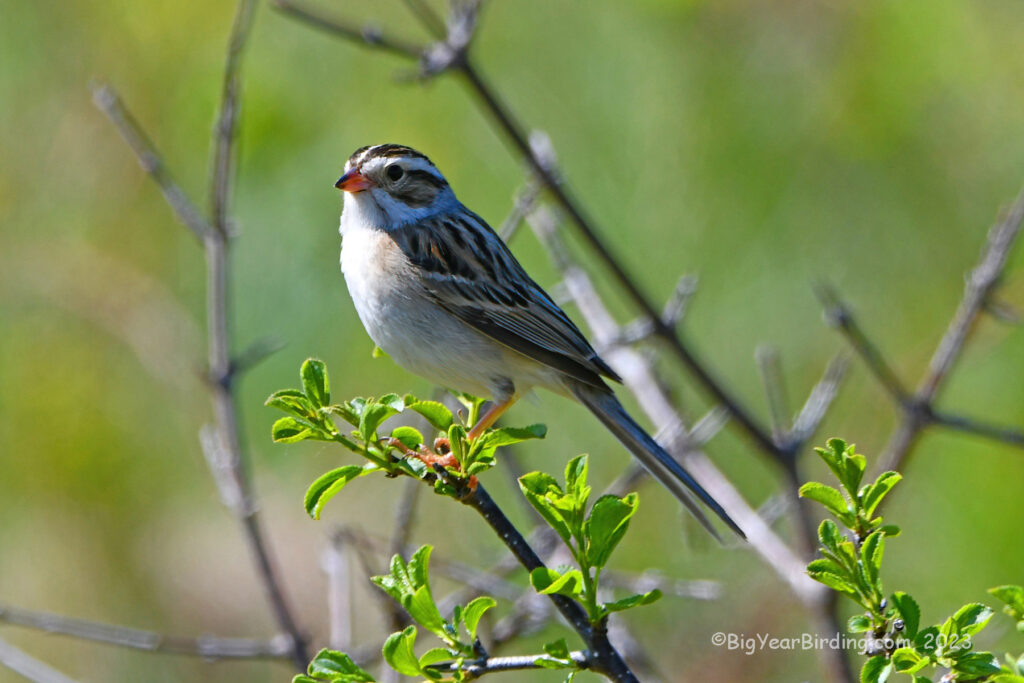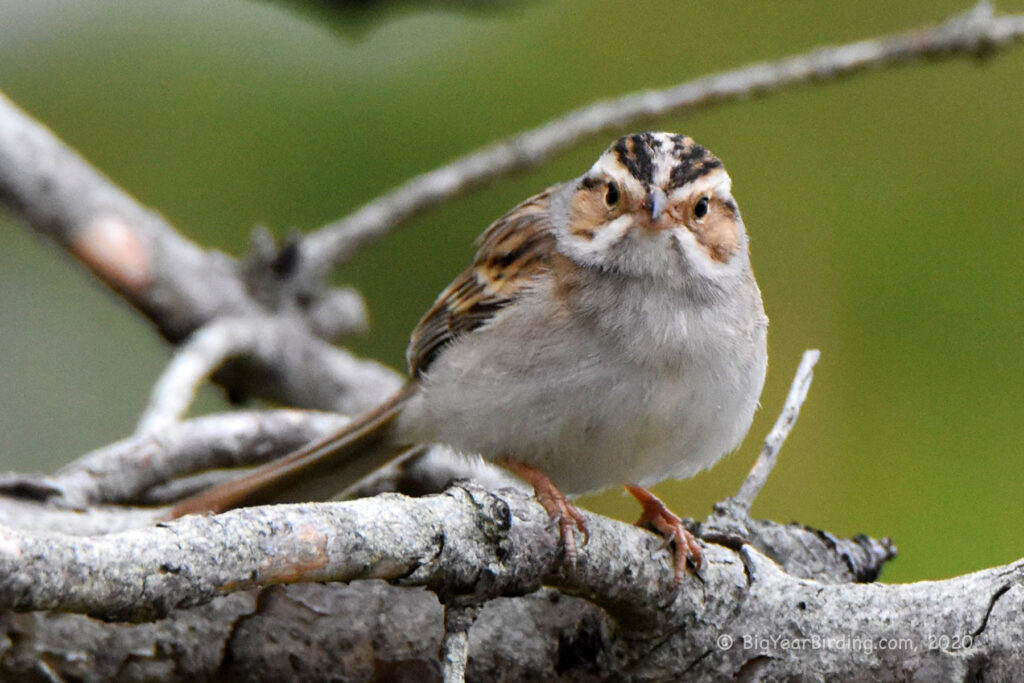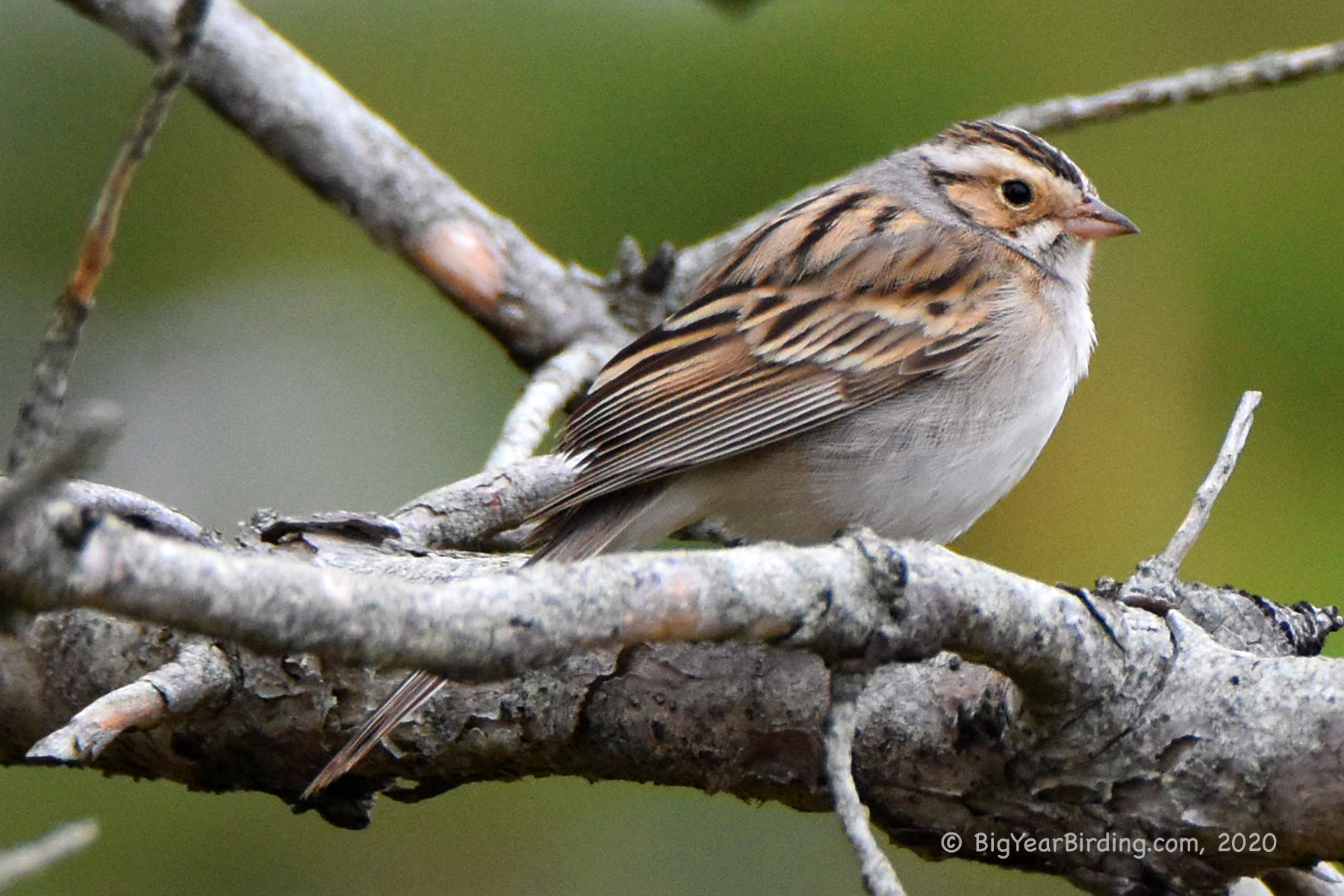
The Clay-colored Sparrow (Spizella pallida) is a small, but strikingly marked bird that belongs to the family Passerellidae. Adult birds are typically 4.5 to 5 inches long, with a wingspan of 7 to 8 inches, and weigh between 0.35 and 0.5 ounces. This species is slightly smaller than a House Sparrow, with a slimmer body and a shorter, conical bill.

The Clay-colored Sparrow’s most distinctive field mark is a central crown stripe, which is buffy or grayish-brown in color, with a contrasting gray eyebrow stripe above it. The crown stripe is bordered by two darker stripes on either side, giving the appearance of a double headband. The bird’s overall coloration is primarily gray-brown, with dark streaks on the back and wings, and a pale belly. The tail is relatively short and has a slightly notched shape.
Clay-colored Sparrows are primarily found in North America, breeding in the prairie regions of Canada and the northern United States. During the winter months, they migrate south to the southwestern United States and Central America. This species typically arrives on its breeding grounds in late April to early May and departs for its wintering grounds in September to October.
In terms of behavior, the Clay-colored Sparrow is a shy and elusive bird that is often difficult to observe closely. It tends to forage for seeds and insects in dense vegetation, frequently staying hidden among tall grasses and shrubs. During the breeding season, males can be heard singing from exposed perches or while in flight, with a simple, sweet song that consists of a series of buzzy notes.

Overall, the Clay-colored Sparrow is a charming and distinctive bird that is a favorite among birdwatchers and nature enthusiasts. Its unique coloration and relatively small size make it easy to identify in the field, and its elusive behavior only adds to its appeal.


